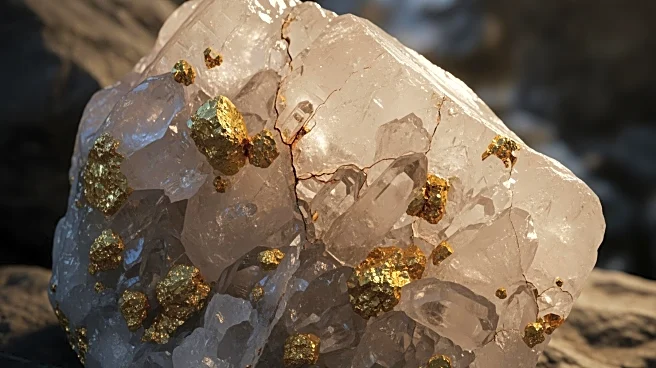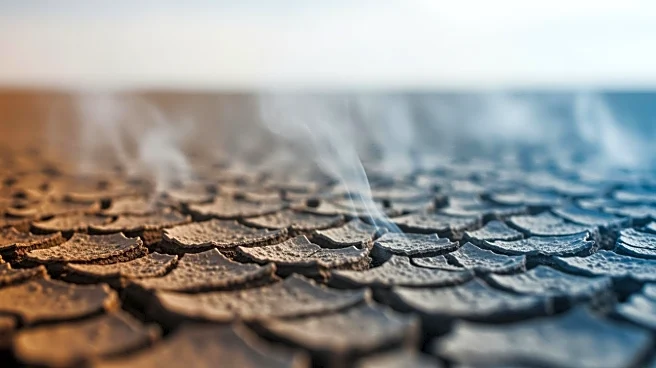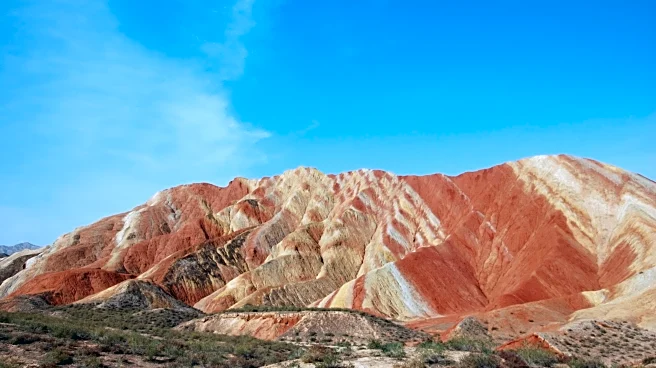What's Happening?
A team of geologists, led by Christopher Voisey at Monash University, has discovered that earthquakes can generate electric fields in quartz, leading to the rapid formation of gold nuggets. The study,
conducted in collaboration with CSIRO and the Australian Centre for Neutron Scattering, explored the piezoelectric properties of quartz, which generate voltage when stressed. This voltage can cause dissolved gold ions in hydrothermal fluids to deposit as solid metal on quartz surfaces. The research involved laboratory experiments where quartz was mechanically stressed to simulate earthquake conditions, resulting in the appearance of metallic gold on the quartz grains. This process, known as electrochemical deposition, suggests that seismic activity can enhance gold growth in quartz veins, particularly where small gold grains already exist.
Why It's Important?
This discovery provides a new understanding of how large gold nuggets can form in quartz veins, which are common in orogenic gold systems. These systems account for approximately 75% of the gold mined historically. The findings could influence mining strategies by highlighting the role of seismic activity in concentrating gold deposits. Understanding the electrochemical processes involved in gold formation could lead to more efficient extraction methods, potentially reducing costs and environmental impact. The study also adds a new dimension to geological models of gold formation, which traditionally focused on the role of hot fluids in depositing gold.
What's Next?
Further research may explore the practical applications of this discovery in mining operations, potentially leading to new techniques for locating and extracting gold deposits. Geologists might investigate other minerals that could be affected by similar electrochemical processes during seismic events. Additionally, the study could prompt a reevaluation of existing gold deposits, considering the role of piezoelectric effects in their formation. Mining companies and geologists may collaborate to develop technologies that harness these natural processes to improve gold recovery.
Beyond the Headlines
The study highlights the complex interplay between geological processes and mineral formation, suggesting that natural phenomena like earthquakes can significantly impact resource distribution. This could lead to broader implications for understanding the Earth's crust dynamics and the formation of other valuable minerals. The research also underscores the importance of interdisciplinary collaboration in advancing scientific knowledge, combining expertise in geology, physics, and materials science.














